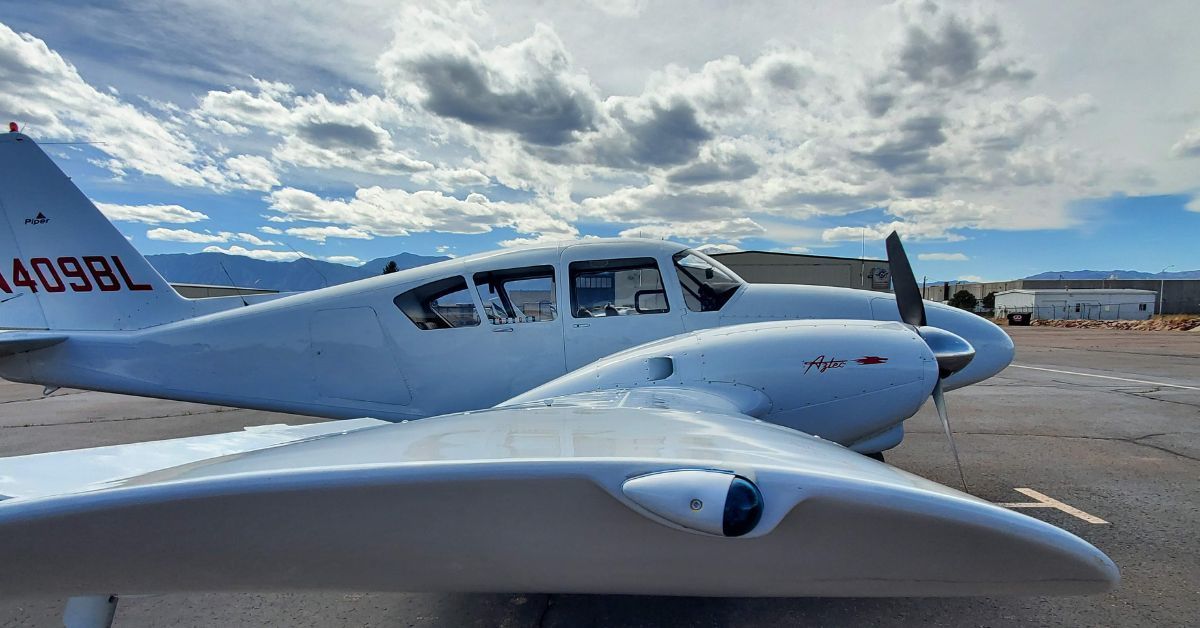How Weather Impacts Flight Training and How To Prepare
Understanding the effects of weather on flight training is crucial for every aspiring pilot. Weather conditions are not just external factors; they serve as one of the most important considerations for aircraft operation, flight planning, and in-flight decision making.
This blog dives deeper into how weather impacts flight training and how to prepare for the unexpected. Don’t worry, these challenges are a standard part of aviation life, and learning to anticipate and navigate through them is a foundational skill for all pilots working toward their certifications.
The Dynamic Role of Weather in Flight Training
The weather can be an ally and an obstacle in flight training, shaping a pilot’s skills in ways no simulator can replicate. Clear skies provide ideal conditions for learning basic maneuvers, navigation, and communication without added stress. On the other hand, low visibility, turbulence, crosswinds, and other challenging weather test a student’s ability to make sound decisions, remain composed under pressure, and adapt quickly.
Encountering a variety of weather conditions allows student pilots to develop confidence, sharpen their judgment, and become more versatile in real-world scenarios. Each type of weather offers a new learning opportunity, reinforcing the importance of preparation while teaching the value of flexibility.
For example, a student training out of Charlotte–Monroe Executive Airport may practice smooth takeoffs and landings during calm morning flights. Later that week, a sudden afternoon thunderstorm forces a diversion exercise and teaches the pilot-in-training how to reroute safely and communicate effectively, skills that ultimately contribute to safer, more capable aviators.
Key Weather Components That Affect Training
For instance, the wind can transform simple exercises into rigorous challenges. Often, crosswinds complicate landings and takeoffs, teaching pilots the importance of control and judgment. Meanwhile, visibility reduced by fog or heavy clouds directly highlights the importance of spatial awareness and instrument reliance. Pilots must adjust their plans for convenience and maintain safety standards.
These real-world variables help student pilots cultivate a disciplined mindset and respect for the unpredictable nature of flying. It’s one thing to read about adverse conditions in a textbook; it’s another to feel the aircraft react in real time. Often, instructors use changing weather as an opportunity to reinforce critical thinking and emergency protocols.
Trainees gain firsthand experience in adapting flight paths by communicating with air traffic control or safely delaying takeoffs, building the kind of situational awareness that defines great pilots.

Seasonal Variations and Their Impact on Flight Schedules
Seasons significantly influence flight schedules, especially in regions with diverse climates. Winter introduces the complications of icy runways and frigid equipment, while summer often brings turbulent air due to rising heat currents. Aspiring pilots quickly learn to adapt to these new variables, refining their abilities to manage risks efficiently during pre-flight and in-flight conditions.
The Importance of Forecasting in Training
Reliable weather forecasting is one of aviation’s great advancements, but its application requires deliberate interpretation. Pilots in training are taught how to decode forecasts, learning to distinguish which weather elements are deal-breakers versus manageable obstacles. Incorporating weather factors into pre-flight checks emphasizes the need for proactive decision-making, ensuring safe and consistent training for flights.
Adapting Techniques for Windy Conditions
Wind variables are prominent factors influencing student success and aircraft performance. Practicing takeoffs and landings in crosswind conditions develops a pilot’s skills and underscores the principles of balance and stability. Through diligent instruction, students master how to gauge crosswind severity, integrate corrective actions, and execute safe procedures. Wind management thus forms one of the cornerstones of foundational pilot training.
Navigating Instrument Flight in Poor Visibility
Preparing for the ways weather impacts flight training often intersects with instrument practice, especially when conditions limit visibility. Flights facing rain or heavy overcast skies underscore the importance of using cockpit instruments for navigation, rather than relying solely on visual cues. Through supervised instruction, student pilots transition to increased comfort and skill in using GPS systems, altimeters, and horizon indicators to maintain clear routes despite adverse external conditions.
Thunderstorms and Their Widespread Implications
Thunderstorms, a frequent occurrence in some regions, pose complex challenges for flight trainees. These weather events create turbulence and introduce risks of lightning and rapidly shifting winds. Learning to identify signs of approaching storms and proactively adjusting flight plans equips pilots to prioritize safety with confidence. This preparation is indispensable for trainees advancing toward comprehensive aviation readiness.
How Weather Shapes Pilot Behavior
Adapting to weather doesn’t solely focus on technique; it shapes the emotional discipline required for aviation. Pilots-in-training often face stress when managing unexpected weather challenges or postponements. Pilots-in-training build mental endurance alongside technical skills by practicing patience, situational awareness, and quick chronological thinking, which are vital attributes for decision-making during adverse events or in complex airspaces.

Weather Challenges and the Rotor Transition Program
Students involved in transition pathways, such as the Rotor Transition Program, encounter added weather considerations during their training. Helicopter pilots transitioning to fixed-wing aircraft adjust their techniques to account for the differences in handling under challenging weather conditions. These programs emphasize a comprehensive understanding, enabling flexibility across both types of aircraft by recognizing how wind, turbulence, and cloud conditions influence performance.
Leveraging Technology for Safer Training
Modern flight academies leverage advanced technology to train students for adverse weather scenarios. Flight simulators replicate storms, wind shear, and low visibility with precision, providing trainees with essential experience without unnecessary risk exposure. Utilizing digital tools bridges the gap between theoretical knowledge and practical application in real-time, enhancing overall preparedness and boosting confidence levels.
Combining Training With Long-Term Weather Awareness
Seasoned instructors emphasize weather awareness as a lifelong skill rather than a short-term necessity. Understanding how to assess conditions shapes a pilot’s proficiency at every stage of their career, from pre-flight briefings to post-training reflections. Mastering weather considerations during training lays the groundwork for safer professional aviation journeys, where adaptability becomes second nature.
Preparing for Real-World Weather Challenges
While training builds a pilot’s capabilities, real-world flying often presents unexpected complexities that extend beyond textbook techniques. Ongoing learning about meteorological trends, coupled with regular practice involving unpredictable weather shifts, transforms theoretical principles into actionable flight strategies. Once professional pilots hone this holistic mindset, they reduce risks and increase operational effectiveness worldwide.
Weather is more than just a backdrop to flight training; it is a central force that shapes skills, mindset, and professionalism. By confronting these challenges early on, trainees develop into skilled pilots and become confident, resilient individuals prepared to face unpredictable skies ahead.
Success begins with preparation and continues as a dedication to lifelong learning, where pilot and sky become harmonized through experience and expertise. Ready to rise to the challenge? Enroll today at Arapahoe Flight Club and begin your journey toward becoming a confident, capable pilot—no matter what the skies bring.
